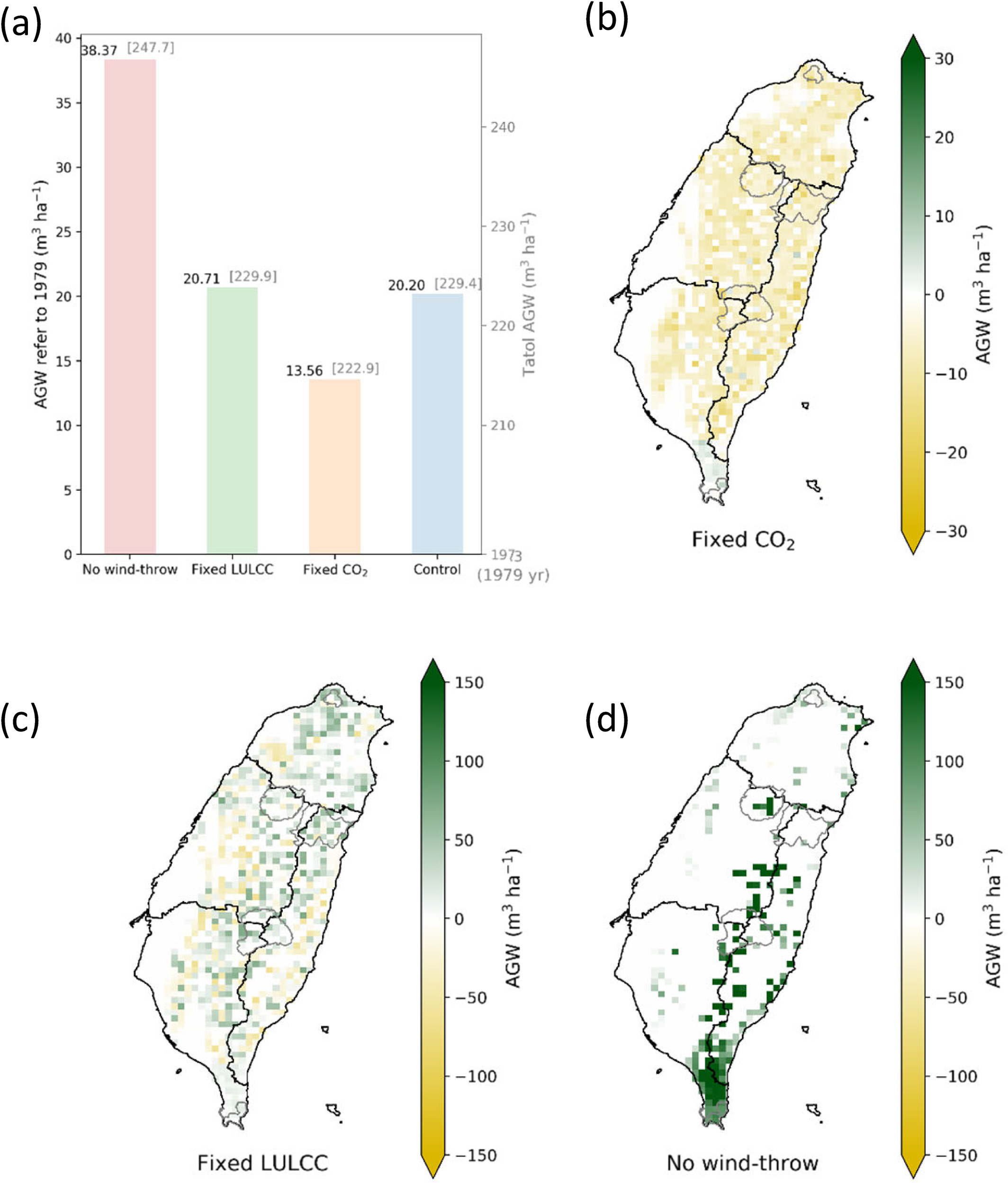Contact: Yi-Ying Chen /
yiyingchen@gate.sinca.edu.tw /
+886-2-2787-5833
Key words: land use and land cover changes, CO2 fertilization, wind disturbance, tropical cyclones, climate variability, carbon sequestration
Forest biomass is one of the main carbon pools found in terrestrial ecosystems. Its storage capacity is, however, vulnerable to climate change and anthropogenic and natural disturbances. In this study, simulation experiments were carried out to understand the impact of tropical cyclones, land use and land cover change, as well as increasing atmospheric CO2 concentrations on the forest biomass in Taiwan. The simulation experiments were made possible thanks to century-long country-specific land cover and climate reconstructions, and recent developments of the ORCHIDEE model by the addition of a module capable of simulating the effects of windstorms on forest biomass.
Model simulation results show that wind disturbance has a big impact on carbon sequestration rates. In the absence of wind disturbance, the annual sequestration rate would be double that of the present-day rate. In other words, not considering wind disturbances could lead to a significant overestimation of the forest biomass in regions prone to frequent tropical cyclones, some of which can reach typhoon strength.
Key points
- Findings show a greater decrease in forest biomass due to tropical cyclones than to the effects of changes in LULC, CO2 and climate
-
- Models which do not consider wind disturbance may greatly overestimate the forest biomass in regions prone to frequent tropical cyclones
More information
- Chen, Yi-Ying*, Huang, W., Cheng, C.-T., Hong, J.-S., Yeh, F.-L., Luyssaert, S. (2022): Simulation of the impact of environmental disturbances on forest biomass in Taiwan, JGR-Biogeosciences, 127, e2021JG006519 LINK



